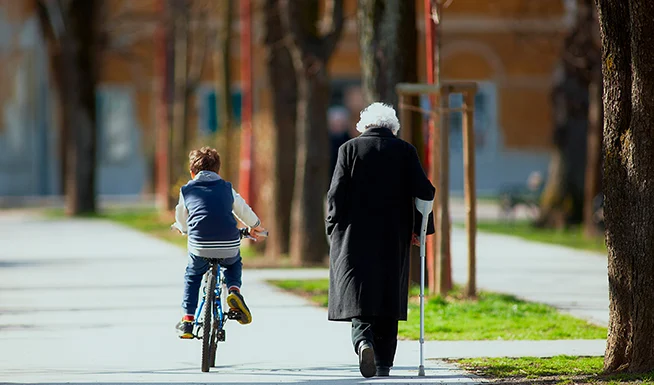Thank you for sharing! This discussion on the conflict between different age groups in the city is very practical and closely related to our lives. We often see square dance aunties and basketball teenagers fighting for the venue, and disputes over giving up seats on the bus. You pointed out that the core problem is that the current urban planning has the limitation of “single generation perspective”. In community life, young people need dynamic and efficient urban life facilities, while the elderly pay more attention to safe and convenient facilities suitable for the elderly. This difference in demand is not essentially contradictory, but limited public resources magnify the contradictions between people of different ages. The “time-sharing” and “multi-functional design” mentioned in the article make me feel very practical. I think the age conflict reflects the lack of refinement of urban design and the failure to fully consider the core needs of people of different ages. Just like group work needs to coordinate the needs of different classmates, urban construction and management also need to establish more flexible mechanisms and policies.
What different age groups want from city life – Why do our cities ‘clash’ between the young and the old?
Urban space is increasingly becoming a ‘battleground’ where the needs of different age groups collide. Whether it is an intergenerational argument on a Newcastle bus or square dancers competing for space with basketball players in China, urban design has failed to reconcile the needs of generations ( figure 1).

Figure 1: The divide between young and elderly
Young vs. old: differences in urban needs
Younger people tend to seek easy access to public transport, 24-hour convenience stores, shared office space, and safe places to move around at night. Older people, on the other hand, value flat walking paths, convenient community healthcare facilities, and plazas.
In many cities, public facilities are designed to cater for only one type of group, neglecting generations balance. For example, commercial districts are full of trendy places to spend money, but the basic services needed by older people are relegated to the margins (Nelischer and Loukaitou-Sideris, 2022).
Battle for resources: who should give in?
Conflicts over the use of public space are particularly evident. Buffel et al. (2015) found that generations ‘occupation’ and ‘exclusion’ of spaces in Manchester often led to escalating community conflicts and even exacerbated antagonism. exclusion’ often lead to escalation of community conflicts and even exacerbation of antagonism. Such conflicts not only affect the experience of their respective activities, but also weaken the sense of identity and belonging to the city (Kabisch and Haase, 2020).
The solution: building inclusive urban spaces
To mitigate generations conflicts, urban planning should adopt the following strategies:
- Time-sharing: rationalising the use of public space, for example, by providing a quiet environment for the elderly during the day and for young people to exercise in the evening.
- Multifunctional design: set up different functional areas in the same space, such as setting up a dancing area and a quiet rest area in the square (Almeida, 2016).
- Encourage generations interaction: organise activities to promote communication between different age groups (Buffel and Phillipson, 2015).
Cities should be homes for all
Urban planners often overlook the fact that cities are for all. Through sound urban design and policy support, the following goals can be achieved:
- Enhance the walking environment.
- Build multi-purpose community centres.
- Enhance night-time safety measures.
Through these measures, it is hoped that the city can become a space where people between the ages of 8 and 80 can feel comfortable and belong.
References:
Almeida, M. F. (2016). Age-Friendly Walkable Urban Spaces: A Participatory Assessment Tool. Journal of Housing for the Elderly, 30(4), 396–411.
Buffel, T., & Phillipson, C. (2015). Negotiating urban space: Older people and the contestation of generational and ethnic boundaries.Intergenerational Space. Routledge.
Kabisch, N., & Haase, D. (2020). Urban green spaces for social interaction, health, and well-being. Environmental Science & Policy, 104, 75–83.
Nelischer, C., & Loukaitou-Sideris, A. (2022). generations Public Space Design and Policy: A Review of the Literature. Journal of Planning Literature, 38(1), 19-32.



Thank you for sharing! This discussion on the conflict between different age groups in the city is very practical and closely related to our lives. We often see square dance aunties and basketball teenagers fighting for the venue, and disputes over giving up seats on the bus. You pointed out that the core problem is that the current urban planning has the limitation of “single generation perspective”. In community life, young people need dynamic and efficient urban life facilities, while the elderly pay more attention to safe and convenient facilities suitable for the elderly. This difference in demand is not essentially contradictory, but limited public resources magnify the contradictions between people of different ages. The “time-sharing” and “multi-functional design” mentioned in the article make me feel very practical. I think the age conflict reflects the lack of refinement of urban design and the failure to fully consider the core needs of people of different ages. Just like group work needs to coordinate the needs of different classmates, urban construction and management also need to establish more flexible mechanisms and policies.